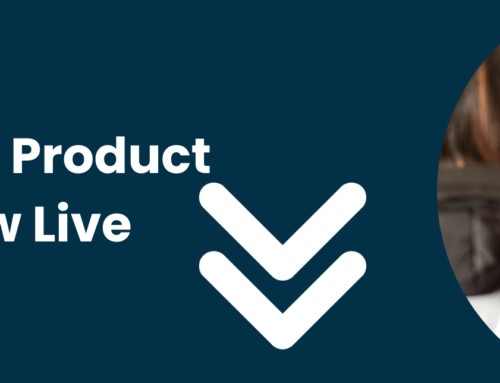January Kick Off Roadshow Events
Hi everyone and welcome to this week’s protection update.
If you joined me on the November roadshows, you will remember we started a discussion about how to create a stronger link between mortgage advice and protection advice.
Yes, I know some of you do fantastically well and you might well be sat there thinking; I do not need to improve anything in my sales process.
But if you look across the network and the wider industry; not every adviser makes the most of the opportunity to talk about protection, when arranging someone’s mortgage.
So we’ve created a sales aid that will help you and I’m going to break this down into all the key points and the thought process behind how it will help you. It’s available to download right now.
Use it during the mortgage process
The sales aid is called ‘Your home is at risk’… Where else do we see that?
The mortgage illustration!
It says your home is at risk if you cannot keep up repayments on your mortgage or other loan secured against it.
This is a statement written by the regulator for financial services.
Its important and it needs to be properly considered when someone is taking out a mortgage to help them buy their property.
What does “At Risk” mean?
It means you could lose it.
Other risk statements say things like “your home may be repossessed” …
So when setting out your stall with a new client, explain that you have a duty of care. You have a process that you work to and that is to help you buy your home by way of a mortgage on the most competitive terms…
But its also to make sure you don’t lose it should the worst happen…
Ask them… Is that, ok? Get their agreement straight away.
The premise sounds reasonable and that is what you are aiming to work towards.
Remind them of it during the process because it will make more and more sense to them each time you do.
The Risk Statement
We’re still in the mortgage process but when you get to the point where you make the customer aware of the risk statement, “Your home is at risk” … – it might be when you look at your first illustration?
Explain that this is your duty of care as mandated by the regulator for financial services and it goes back to the objective you are working towards – get them the mortgage to help them buy their home, but make sure they do not lose it should the worst happen…
Explain that “I need to make you aware of this”
“There are different risks that people face which are important considerations, but the good news is there are things you can do to mitigate these risks”.
When we are talking about “Your home is at risk” – we’re talking about the home being repossessed because you can’t maintain those mortgage payments.
So, you need to have that moment in your process where you draw your clients attention to the risk statement. It’s there in black and white. It is probably going to be in other places too (your website, business card, other literature).
Pull out the ‘Your home is at risk’ sales aid
The fact that the risk statement is so recognizable and printed on every mortgage illustration and mortgage offer; you can make that the reason why the client should complete the sales aid.
Now this can either be with you or they can do it in their own time.
If it’s a couple; they need to complete it together. They need to answer the questions honestly.
Let us take a look at it piece by piece:
The opening statement explains the purpose of this document and why we are asking your clients to fill it in.
Your mortgage is secured on your home so there are risks that homeowners face when they find themselves in a position where they cannot keep up the repayments on their mortgage. Please answer the questions below open and honestly about how you feel about the various mortgage risk areas.
So again, the language is consistent and it confirms what you have told them verbally.
Question 1 – If you died during the term of your mortgage; how important is it that your family are able to pay off the mortgage and keep the family home?
Are we talking about life assurance? No, we do not know whether they need that yet. We are asking them whether dealing with this scenario is important to them or not important to them. That is why, if your clients are a couple; they answer the questions together.
Is it important, or not important?
Question 2 – How important would it be that your family are able to maintain the monthly mortgage payments?
This is a follow on from the first question. You might think this is a strange one to ask because we usually sell life insurance to pay off the mortgage. But what does the risk statement say?
It says “your home is at risk if you cannot keep up your mortgage repayments” … it doesn’t say anything about paying off the mortgage completely.
We know there is a solution for that, but we’re asking this question because it directly links to the risk statement.
And if the client says “this is important” – how would that affect your advice and recommendation?
Question 3 – If you are sick and cannot work; how long would you receive full sick pay for?
There is an assumptive here which is that when someone goes off work; there is a point in time where your income will stop.
This is simply asking for a factual answer.
Full sick pay means the clients can continue to function financially so we’re just asking how long they would receive it for.
They might not have any sick pay from their employer.
But again, the ability to pay the mortgage each month is what we’re talking about here.
Question 4 – How long could you live off your savings?
This is a general question about the effects of being off work sick.
If your client has enough savings, they might not need to work ever again.
But we know that’s rarely the case.
And this question is legitimate because it points to the risk statement again. Can they live off their savings and will they be able to pay their mortgage from those savings.
Its quite interesting to start pondering that because; even if you had a large amount of savings, would you want to use them to live off or were they in place for another reason?
Question 5 – If you became seriously ill during the term of your mortgage (cancer, stroke, heart attack); How important would it be to fully or partially repay the mortgage so you could focus on your recovery?
Carrying on the theme of sickness, we are now talking about serious illnesses.
We know they do happen and whilst your clients might not have ever thought about this before; this is the first opportunity to put that possibility on the table.
And if you look at the framing of the question, we’re again focusing on the positive outcome for the customer where we’re looking at paying off some or all of the mortgage so they can focus on their recovery.
Again, is that important or not important to them?
And finally, we’ve got a question about home insurance.
Insurance for your Property is mandatory and a condition of your mortgage, but is it important to also include cover for your contents?
If you look at the framing of that question, its an assumptive because we’re saying that you have to have buildings insurance because that’s compulsory. But what about cover for contents?
Again simple answer – important or not important?
But if the clients complete these set of simple questions and they say they wouldn’t want their family to lose their home, they don’t have much sick pay, they couldn’t survive long from their savings and they would want to focus on their recovery in the event of a serious illness.
They also would like to make sure the things in the house are covered, as well as the house itself.
What are they telling you?
But will it work?
I’ve been talking to advisers all across the UK about this type of idea and nobody yet has said this will get in the way of sales. In fact the opposite; everyone has said this can only help so here are some key considerations about whether you choose to pick this idea and run with it.
My challenge is to get every client to complete this very simple questionnaire for the next 6 months and let’s see the impact.
Here’s what I want you to think about…
Do you think the questions are fair and reasonable?
Is there anything I have gone through in this podcast which sounds pushy or an aggressive sales tactic?
Is the positioning of those questions easy for the client to answer?
What areas of protection could this sales aid help to improve?
Think about your own sales this year. Are there any particular areas of protection or general insurance that you feel could be improved by using this?
If your business or advisers within your business concentrate on mortgages but refers clients for protection; could this help sales if one of these sales aids is delivered to the protection adviser?
Again, let me know your thoughts. If you are an adviser who picks up business from a mortgage adviser; do you think this could help you win more business having these questions as a starting point?
And let’s think about outcomes…
What would happen if a client said one or more of these risk areas was important to them?
Would having these questions addressed early in the process help you when it comes to the protection conversation?
Do you think you would be starting from a stronger position because you can say “you said that it was important that…”
Existing clients
Could you run a campaign to target existing clients. Mention duty of care and remind them of the risk statement on their mortgage.
Explain that getting in contact is part of the normal review cycle with valued customers.
Again, if they filled it in and told you those things were important to them; does that give you more of an opportunity?
New years resolution – 6 months trial – every mortgage client
And as I mentioned… if you think this is a good idea, set yourself a new years resolution.
From January 1st, every client completes this very simple questionnaire whenever you arrange a mortgage.
Make it normal. Make it business as usual.
Tell them it’s part of the process and we ask everyone to answer this simple set of questions because of the risk statement.
See how clients react.
The next few months of the mortgage market look like they will be challenging but let’s get on the front foot and make 2023 even better than 2022. The opportunities are out there!
So as I said before; I’ve added a link to the page on the adviser site where you can download this sales aid.
You will see 2x versions. One version has a binary ‘important’ ‘not important’ response. The other version allows your clients to use a sliding scale to tell you how important these things are. We created that based on adviser feedback.
Next week will be my last protection update of 2022 and I’ll talk about the changes to the format we will be introducing for next year.
So have a great weekend everyone – keep warm – and I’ll see you soon.



